Energy Insider Shares His Predictions About the Future of Electric Mobility
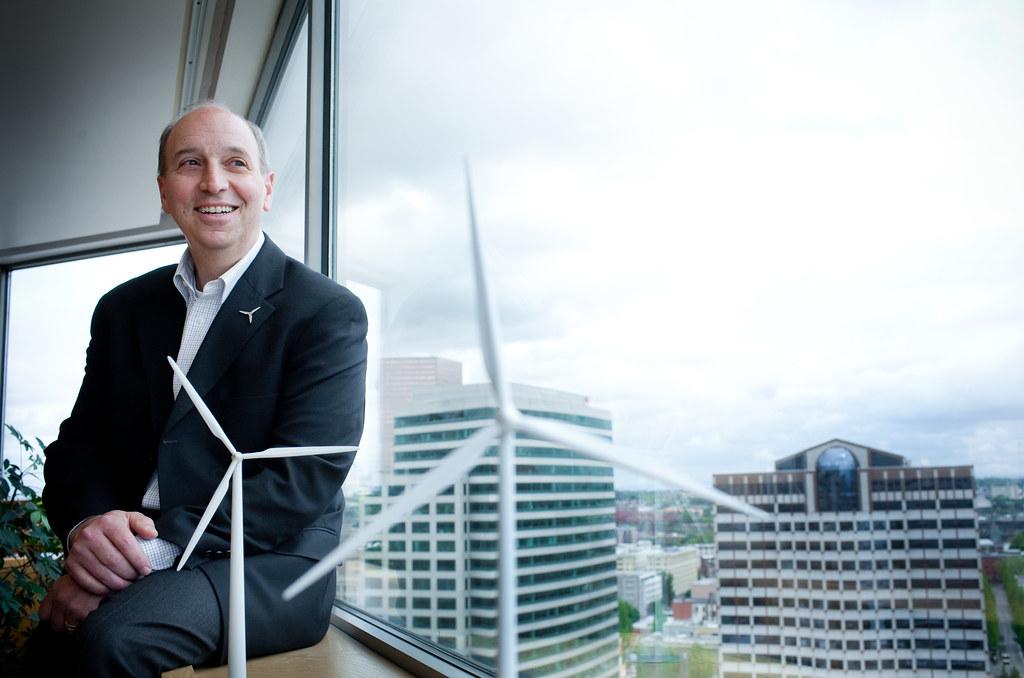

Image: Jim Piro, retired CEO of the investor-owned utility company Portland General Electric.
The transition to zero-emission vehicles is unfolding before our eyes. “We are at an exciting point where more and more electric vehicles with longer ranges are coming out,” said Jim Piro, retired CEO of Portland General Electric (PGE), an investor-owned utility company based in Portland, Oregon. “We are at that critical junction. I want us to take a big step forward and have electric vehicles be the attractive choice for consumers. ”
There is no one clear path, however, for the best way to make it happen. As co-convener of the governor’s sponsored Oregon Electric Vehicle Collaborative project, Piro is dedicated to developing solutions that chart the way forward. Oregon has committed to put 50,000 registered electric vehicles on the roads by 2020. The ultimate goal is for all passenger vehicle sales in Oregon to be Zero Emission Vehicles no later than 2050.
TriplePundit recently sat down with Piro, and he offered a multi-faceted perspective on the future of electric mobility based on his 43-year career in the electric industry. He has received national recognition for leading PGE in the development of renewable energy and electric transportation and pioneered the implementation of clean technologies in Oregon. Read on for his top insights.
TriplePundit: Why do you believe vehicle electrification is important?
Jim Piro: Vehicle electrification can address climate change while at the same time promote innovation and improve a city’s overall atmosphere and environment. For the electric utility, electric vehicles can help facilitate an efficient electricity system and not only grow load in a time of more energy efficiency, but also help manage load.
With more renewable energy penetration across the country, we need loads that are more flexible. Electric vehicles can be a storage device when there is excess renewable energy. Down the road, they can be a vehicle-to-grid and vehicle-to-home resource, too.
As CEO I believed you either, “lead, follow or get out of the way.” As an organization, the more I encouraged employees to lead and think outside the box, the more we identified opportunities to innovate and grow. The more we work together on improving the overall environment for electric vehicles, the better chance this market will grow.
TriplePundit: What do you see as ways to promote EV adoption?
JP: Economics, infrastructure and education matter. We need to help the car manufacturers sell cars. Initially, we need smart incentives to create a strong charging infrastructure and we need to tell the story about the benefit of EVs to a whole range of customers. Ultimately, we have to make it easy for consumers to purchase EVs and charge them.
Educating people on electricity as a transportation fuel and its full value is important. People understand price per gallon, but they don’t understand the idea that 12 cents per kilowatt-hour is about $1 per gallon. Moreover, electricity prices are much less volatile than gasoline and will be even more so as we reduce our dependence on fossil fuels.
Helping people understand that the technology is ready is vital, too. More cars are coming out with enough range, prices are coming down, and reliability is good. I think the cars are outstanding, and telling that story is central. I have driven my Chevy Volt over 70,000 miles, and I have only used 400 gallons of gas.
TriplePundit: Can you tell us about Oregon’s goals for clean transportation?
JP: Oregon set a goal of 50,000 electric vehicles by 2020. But I would look at that as just an interim goal. The idea is: How do we catapult Oregon on a trajectory to a much deeper penetration of electric vehicles? I am one of three co-conveners leading the Oregon Electric Vehicle Collaborative, an Oregon Solutions project supported by the governor. We are bringing key stakeholders together to explore what we can do collectively with the tools we have today to increase electric vehicle sales as opposed to waiting for the legislature to implement additional policy changes.
TriplePundit: What is the process for the Oregon Electric Vehicle Collaborative?
JP: We will look at the things that stakeholders have some jurisdiction over for promoting electric vehicles and explore how to make it attractive for consumers to buy electric vehicles. We intend to evaluate a whole suite of ideas, such as consumer education, charging infrastructure, incentives, regulations and policies (like giving electric vehicles access to HOV/carpool lanes). It is a six-month process that has just begun. I am optimistic; we will have to see where it takes us.
TriplePundit: Is the Collaborative addressing equitable access to clean transportation?
JP: One of the charters of Oregon Solutions is to look at electrification from an equity perspective. Most low-income people do not have access to charging and often live in multifamily homes. We expect to examine solutions such as common-area charging pods, ride-share programs, lease programs, and second-use leases of less expensive electric vehicles.
TriplePundit: Are some countries already doing vehicle electrification right?
JP: Norway has an effective mix. They have given a number of attractive incentives, such as no sales tax on zero-emissions vehicles, free tolls and bridge crossing, and access to HOV lanes. The country is providing charging infrastructure, and in some cases the charging is free. With this confluence of opportunity, they have reached 58 percent of new car sales being electric. China is also heavily promoting electric transportation. We should also look at what they are doing.
TriplePundit: Why would a person or business want to invest in an electric vehicle?
JP: Price and convenience are big reasons. You can run your car for $1 per gallon equivalent or less and charge onsite. You just need to plug your vehicle in, and the fuel is always there. A lot of that $1 comes from peak load prices. If you can incent people to charge off-peak, you could charge the marginal cost of energy—which can be close to zero in a more renewable energy environment.
TriplePundit: How do we encourage business investment in electric transportation?
JP: We need pilot projects and the development of playbooks to help make businesses more confident. In Oregon, PGE is currently working with TriMet on an exciting all-electric bus pilot.
If you have a pilot project, you can build a playbook based on things like weight, distance traveled and the cost of charging infrastructure. This would be especially useful for buses and delivery trucks. There are also benefits to consider such as the environmental impact and a better driving experience. Electric buses and delivery trucks remove idling fumes and are smooth to operate.
TriplePundit: Do you see the utility as having a role with electric vehicle infrastructure?
JP: I believe a good example for how a utility could manage a charging infrastructure is similar to how utilities generally manages street lights. In some cases, a utility owns that infrastructure and provide that service to customers. In other cases, the utility would bring that service to whoever owns and is managing that charger.
Finding advantageous pricing and economic signals is important so that people charge at the right time. We desperately need to ensure that on-peak charging doesn’t happen unless necessary, because that is going to put extra load on the system and extra cost. We want vehicles and chargers to be smart enough to take a signal to say, “I don’t need to charge right now. It is too expensive. I will charge later.”
Also important is that the power is safe, reliable and secure. Utilities are concerned that the chargers are maintained and safe. Electricity is a dangerous product, and chargers can become a danger to the public if not properly maintained.
TriplePundit: How do states meet their clean transportation goals?
JP: As a state, you have to look at the whole basket of things. Having transportation incentives and developing charging infrastructure is important. Oregon is looking at cap and trade, but I also like the idea of state mandates. Clear direction allows companies to plan for the future. While the market mechanisms can create price signals, I tend to prefer being given a target to hit as opposed to driving to it with an uncertain economic incentive.
TriplePundit: Do you have examples of successful mandates and initiatives?
JP: Mandates can be helpful because they provide long-term stability and predictability. In Oregon, utilities built low-cost hydroelectric facilities with long-term investment. If there hadn’t been an assured recovery of costs on prudent investments, then it would have been harder to make those investments.
Utilities in Oregon have been successfully transitioning their electricity generation fleets from coal and natural gas to renewables because of state mandates. We had mandates to phase out coal generation for electricity in Oregon by 2035 and a renewable portfolio standard (RPS) of 50 percent by 2040. With hydroelectricity, Oregon’s electricity will be 90 percent clean. As an initiative, PGE is also shutting its Boardman coal plant down in 2020. This decision was a result of a very successful collaborative process with key stakeholders that I am very proud of.
TriplePundit: How do you sum up the work to be done in Oregon and worldwide when it comes to vehicle electrification?
JP: Oregon is currently a leader in electric mobility. In Oregon, we think and plan long-term and work collaboratively together. We don’t have to get it all done today, but we are good at developing executable plans to reach our goals.
If we think and plan long-term, we will develop more robust and sustainable solutions. Ultimately, we need to tell the story about the benefit of electric vehicles and make it easy for consumers to purchase EVs and charge them. If we agree as a community that this is where we want to go, then we can find a way to get there.
Image courtesy of Jim Piro and PGE
The Solar Workforce Is Mostly White and Male: Industry Calls For a Change
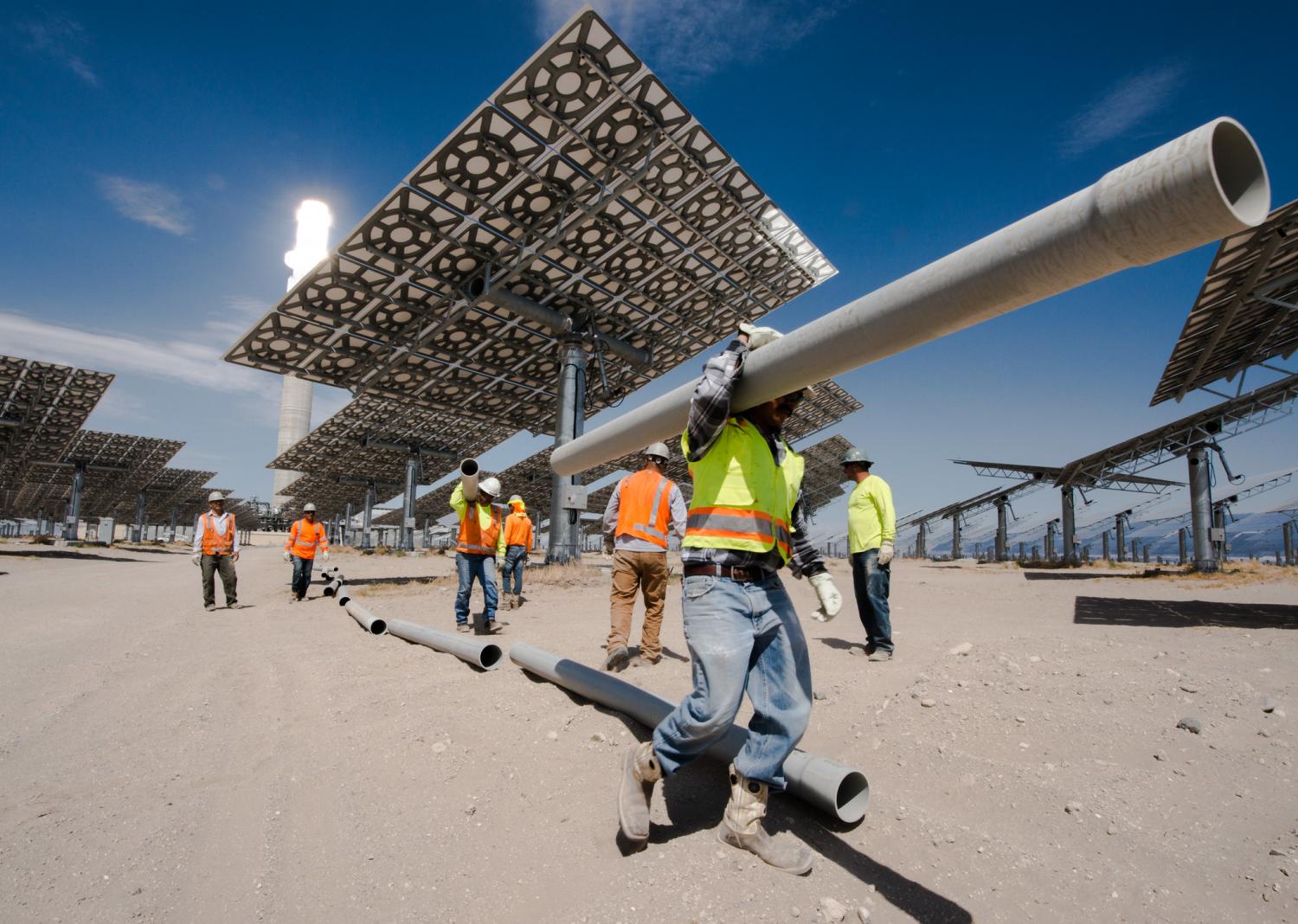
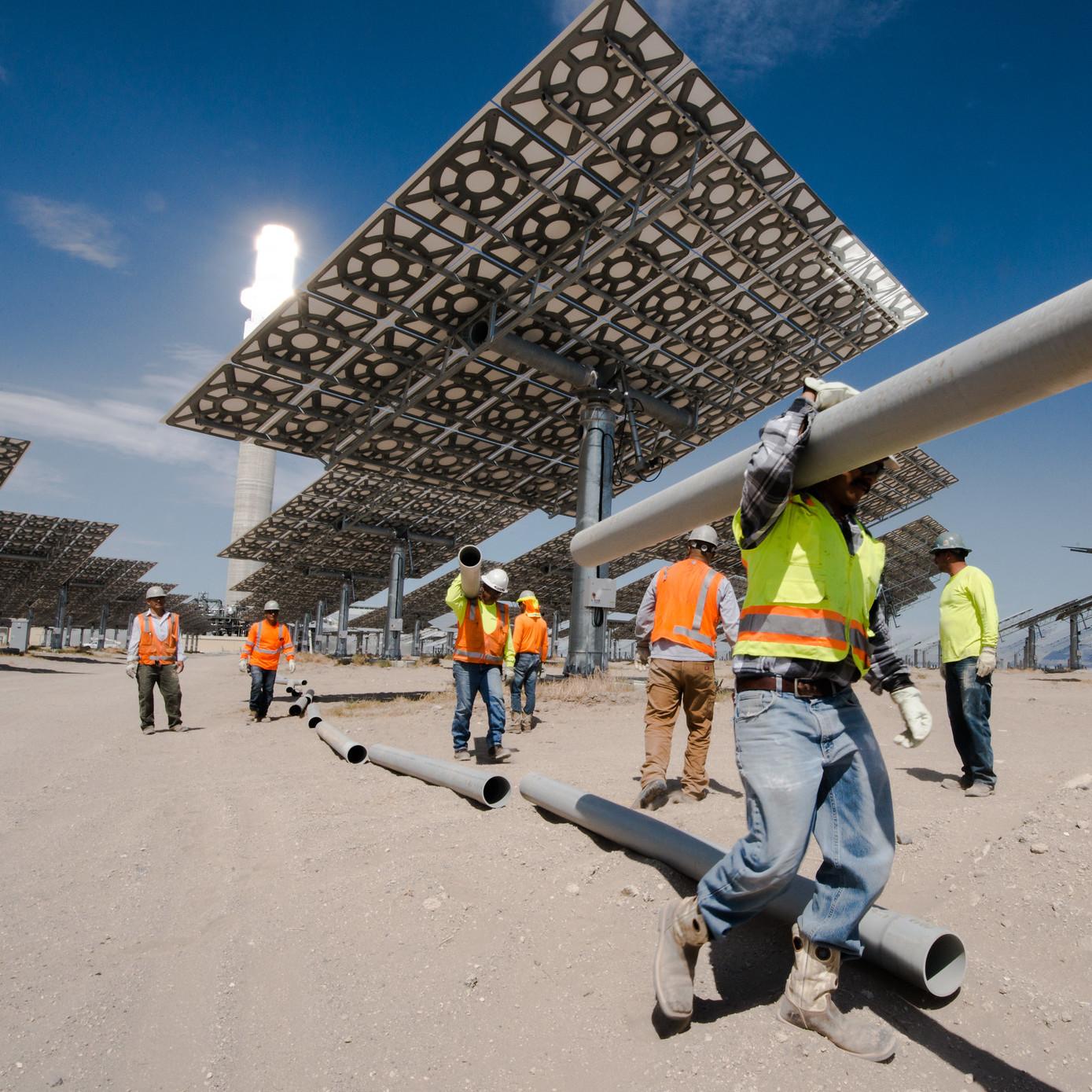
The U.S. solar workforce has grown by 159 percent since 2010, adding nearly 150,000 jobs, according to the Solar Foundation, a nonprofit, nonpartisan organization focused on solar technologies. Even as solar jobs continue to grow faster than the U.S. economy, new research indicates that workers in this burgeoning sector are still overwhelmingly white and male. The overall solar workforce is 73 percent white, and women and gender non-binary people make up less than 28 percent of solar workers.
That's according to a new diversity and inclusion (D&I) study from the Solar Foundation and the Solar Energy Industries Association (SEIA), a trade association for the U.S. solar sector.
While data shows that more solar companies are making diversity a priority, it's clear there's much more work to do. In response, the organizations released a D&I best practices guide to help companies in the industry build their diversity and inclusion programs. They also kicked off the SEIA's #DiversityChallenge on Monday, calling on companies to improve their D&I efforts and make sure everyone achieves equal access to the solar job boom.
“I felt it was important to make this a public issue—to challenge others to stand up and account for the work they are doing,” Abigail Ross Hopper, SEIA’s president and CEO, said in a statement. "We need to take account of our own actions and ask ourselves, are we doing enough? It’s imperative that we take proactive steps to advance these issues, because it isn’t going to happen on its own.”
The gender pay gap is even greater in solar than in the broader U.S. workforce: Female solar workers make 74 cents on the dollar compared to men, while the average woman worker earned 85 percent of what men earned last year, according to the Pew Research Center.
Disparities only grow further up the managerial chain: Among all senior executives reported by solar firms, 88 percent are white and 80 percent are men, according to the report. This white- and male-dominance in solar C suites again mirrors the U.S. economy overall—only 25 companies in the Fortune 500 have a woman CEO. Only two Fortune 500 firms are helmed by women of color, and black women make up less than 2 percent of middle managers in the Fortune 500.
In the solar sector, workers appear to recognize the glass ceiling above them: While 52 percent of men in the industry feel they have successfully moved up the career ladder, only 37 percent of women said the same, according to the report.
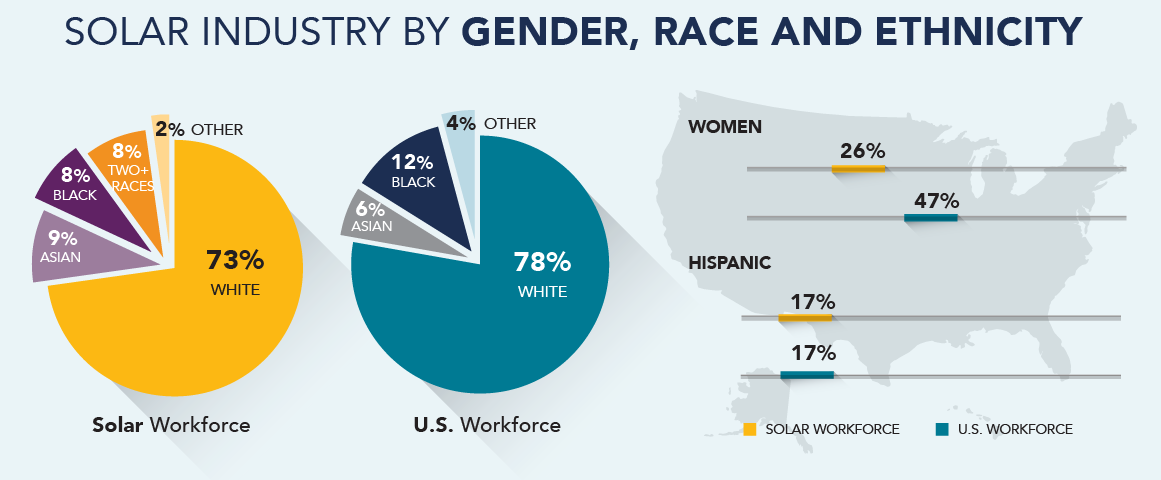
As employment opportunities in the sector continue to grow, addressing these gaps will become all the more important. “The boom of solar jobs is a monumental and promising time for our economy and our environment," A.Tianna Scozzaro, director of the Sierra Club’s Gender Equity and Environment program, a parter on the report, said in a statement. "We have an opportunity to make equity and inclusion the foundation of a clean energy workforce."
In their report, the Solar Foundation and SEIA identified several factors at play—and how companies can improve. "Solar companies tend to rely on personal or professional networks in hiring, but this may limit their ability to recruit diverse candidates," the organizations warned. Only 28 percent of black, Hispanic and Latino employees found their jobs through a referral or by word of mouth, compared to 44 percent of white employees, according to the report. “As leaders, we have a responsibility to create cultural change and address the systemic forces that have allowed discrimination to fester," said Ross Hopper of SEIA.
Additionally, the majority of solar companies do not formally track employee demographics and diversity—and, as is often said, you can't manage what you don't measure. Still, the organizations noted some improvements in this area: 36 percent of solar companies now track demographic data, compared to 27 percent in 2017.
“You can’t change what you can’t see," Erica Mackie, CEO and co-founder of GRID Alternatives, a nonprofit focused on providing solar power to underserved communities, said in a statement. "Accounting for gender and racial inequities within the solar industry with a study like this is the first step.”
And it's a step the industry must take—not only for the sake of social equity, but also to ensure its own success. Studies show that companies with ethnically and gender diverse workforces consistently outperform their peers on profitability. And in technical industries like solar in particular, diversity is key to maintaining a steady talent pipeline: "In today’s tight labor market, 26 percent of solar companies said it was 'very difficult' to hire qualified workers in 2018, an increase from 18 percent the previous year," the report revealed.
“A more diverse solar industry will be a more successful solar industry," Melanie Santiago-Mosier, senior director of the access and equity program at Vote Solar, an advocacy organization for solar policies, said in a statement. “The solar industry is aiming to completely transform the way our economy is powered and avert a looming climate crisis, and it will take people of all genders, races, and life experiences working together to successfully build that brighter future for our children and grandchildren.”
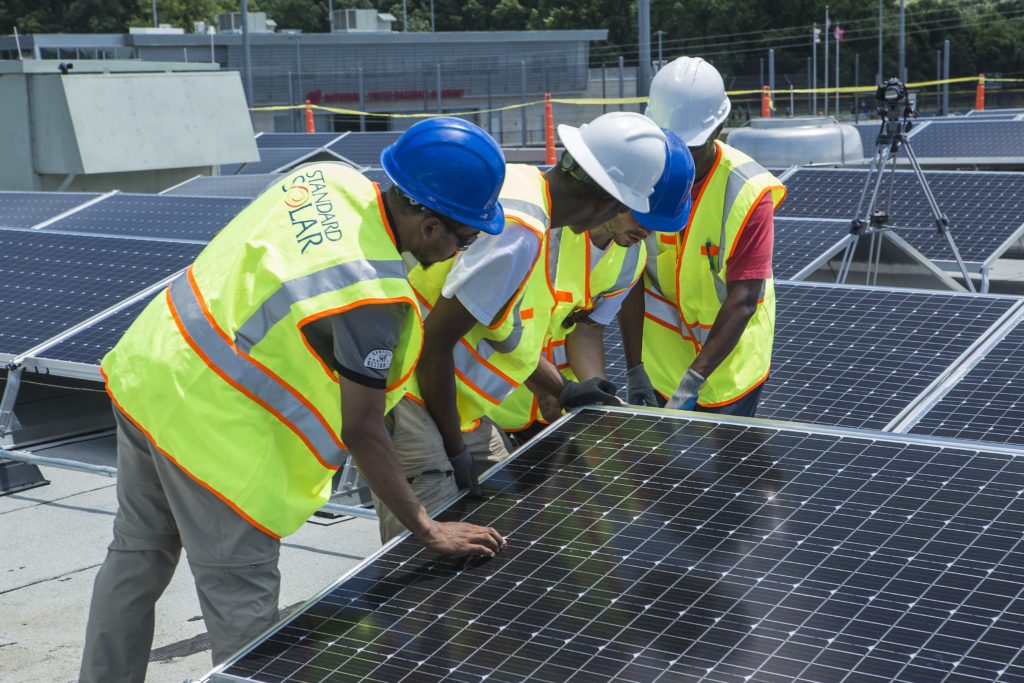
Increasingly, this potential talent pool also includes displaced fossil fuel workers, as companies and organizations across the U.S. look to retrain skilled oil, gas and coal technicians for jobs in renewable energy. “There have been a lot of programs to retrain workers,” Robert Godby, director of the University of Wyoming’s Center for Energy, Economics and Public Policy, told the U.S. Green Building Council. “In renewables, you can enter the industry as a technician, through manufacturing, or through installation and construction. All of those things are happening. In different regions, there are different opportunities.”
The Solar Foundation-SEIA study shows that the solar sector is generally a positive place to work: 73 percent of respondents agreed their firm cultivates a culture of respect, equity and positive recognition of differences. But as this sector continues to expand, pressure to ensure everyone is getting an equal opportunity to participate will only grow.
Already, proponents of versions of the Green New Deal are pushing for climate action in tandem with equitable economic and employment policies. And this industry push—coming from a trade group, which often serves as the broader voice for any sector—raises the bar for solar companies. The only question that remains is whether they will rise to the occasion.
“There are many exciting job opportunities in America’s growing solar industry, and these jobs should be accessible to all,” said Andrea Luecke, president and executive director at the Solar Foundation. “Given the importance of the solar industry in building the energy infrastructure that is needed to confront the challenge of climate change, the solar industry has a tremendous opportunity to serve as a diversity and inclusion workforce model for the wider economy.”
Images credits: National Renewable Energy Lab/Flickr and SEIA
Embracing the Complexity of Waste


The world is facing a waste crisis and the solution is simple: organizations need to embrace the complexity of the waste problem - reporting could help improve their waste management practices.
It is no longer enough for a company to just track statistics on how much plastic they collected for recycling, or their reduction in waste going to landfill. The world is facing a waste crisis and the solution is simple: organizations need to embrace the complexity of the waste problem.
This is something GRI’s draft Waste Standard aims to support companies to do. Now available for public comment, the draft Standard will help businesses understand what causes waste-related impacts, giving them the basis for reporting and improving their waste management practices.
The draft Standard is being developed amidst a paradigm shift in how we think about waste. As we move closer to a circular economy, waste can no longer be seen as the end of the line for our industrial processes – the role of waste is changing, and its value increasing. This makes the process of reporting on waste challenging, even as it demands a radically new management approach.
As Dr. Maarten Dubois of EY Climate Change and Sustainability Services in Belgium, a member of the project working group developing the draft Standard, explains: “Just sending waste to sanitary landfills or incinerators is not sufficient. It’s the total consumption of materials, the total generation of waste and the low value applications of waste, that are the challenges of today.”
Transitioning from a linear system
We’re surrounded by warnings of the waste crisis. Plastic is devastating marine ecosystems and by 2050 our oceans could contain more plastic than fish. Around the world, 820 million people are going hungry, yet we’re wasting one-third of all the food produced. And, thanks to the unprecedented global demand for consumer electronic goods, the fastest-growing waste stream is e-waste.
These impacts are the consequences of our linear ‘take-make-waste’ approach. The variation in the content of waste streams itself demands a new way of reporting waste handling, treatment and disposal. Combined with efforts to move towards a more circular model - in which much of what we class as waste will ultimately be treated as input material - there is a need for a new approach.
As Dr. Dubois puts it, “the idea that if we manage waste properly we are dealing with all the material topics is an idea of the past”. Indeed, businesses should aim for more oversight and control throughout the value chain, from ‘designing out’ waste at the production stage to using waste as an input material and managing it better.
For all these reasons companies need suitable and up-to-date guidance to report on their activities, reflecting this new paradigm. Last updated in 2006, the GRI disclosures for waste focused on treating waste after it has been created, rather than looking at the creation itself. The Global Sustainability Standards Board determined it was time for an update.
Reporting that captures what matters
The draft GRI Waste Standard is designed to be relevant in a more circular future. Changes focus on improvements in four areas:
1. Circularity and waste prevention – Waste is complex but much of the opportunity to avoid its impact lies at the source of its creation. The draft Standard supports a fundamental shift in the perception of waste, from an unwanted burden to a source of valuable materials.
2. Relationship between waste and materials - There is a greater emphasis on the connection between materials and waste. The aim is to build a more complete understanding of how procuring and using materials affects the nature and impact of waste generation and waste quality.
3. Impacts in the value chain – The Standard helps organizations look at their impacts in the value chain and report how they manage those impacts. As working group member Jeff Sokol of NEPCon, USA, explains: “This draft standard really helps to encourage companies to take a look at their value stream and see where waste occurs. By doing that, you will naturally find points where it can be better managed.”
4. Disclosures that act as a compass for reporting - To capture what matters, organizations need strong guidance. As Daniel Gomez, a consultant in Colombia and a member of the working group, sets out, the draft standard will “help companies understand key elements and information they need to make good decisions in the future.”
Have your say
All GRI Standards are developed in a way that takes on board stakeholders’ views, to ensure they are globally relevant. This is certainly the case for the Waste Standard, as working group member Joseph Tong, of Fuji Xerox Ltd in Hong Kong, explains: “It is a practical standard that many companies, large or small, can use. It’s very good guidance for companies to think of their waste impact in a holistic way, which is something very new.”
As Jeff Sokol highlights, it’s important to get a wide range of input: “There are so many industries and cases out there, and so much is changing with circularity and waste management. Get involved to make sure that your data can be reported in a usable way, which will benefit all the efforts you're going to make to put your reporting together.”
Global problems need global solutions. So no matter what sector, type of business or region you are in, help us create a fit-for-purpose reporting standard, which inform choices that help us to understand, manage and transform our approach to waste and meet the challenge of this global crisis.
- The public comment is open until 15 July 2019. To provide feedback on the draft GRI Waste Standard, visit the website and comment
Previously published on GRI's 3BL Media News Room.
Image credit: Pixabay
You Now Must Be 21 to Buy Tobacco at Walmart


As the backlash over teen vaping gets louder, Walmart is the latest retailer to announce that it would stop selling tobacco products to consumers under the age of 21.
Tobacco companies have said going “smokeless” could transform their business models while helping people quit cigarettes. But that agenda hasn’t quite gone as planned as teen vaping has surged in recent years. Feeling the heat, more retailers including Walgreens and Rite Aid have announced they would stop selling tobacco products to consumers under the age of 21. Now Walmart will do the same, as of July 1.
“While we have implemented a robust compliance program, we are not satisfied with falling short of our company-wide goal of 100 percent compliance,” John Scudder, U.S. chief compliance and ethics officer at Walmart, said in a public statement.
The company was one of many to receive a letter from the U.S. Food and Drug Administration (FDA) that inquired about policies and procedures in place to prevent tobacco sales to minors.
The FDA has accused many manufacturers and retailers of not doing enough to curb the spread of teen vaping. Another agency, the U.S. Centers for Disease Control and Prevention (CDC), concluded that vaping is unsafe for anyone at any age, but particularly for teenagers and young adults as old as their mid-20s. One brand in particular has been put under a microscope as its rise in popularity drew the attention of more critics.
“Take a look at JUUL, whose damage was accelerated by rapid scale,” said Barie Carmichael, senior counselor at APCO Worldwide, Batten Fellow at The University of Virginia’s Darden Graduate Business School and co-author of Reset: Business and Society in the New Social Landscape, in an interview with 3p earlier this year.
Despite ongoing concerns over the risks vaping could pose to human health, the FDA has accused manufacturers and retailers of not doing enough to curb the spread of teen vaping—and keeps identifying more health problems, such as seizures, as a result of vaping’s popularity. As a result, more companies are deciding they have no choice but to do what they can to ensure these products don’t end up in teenagers’ hands. To that end, Walmart will also discontinue any sales of fruit- or dessert-flavored vaping products.
Walmart’s shift in tobacco sales comes just as the company issued its first environmental, social and governance (ESG) report. That report outlines other public health initiatives, including the launch of training programs that train pharmacists on educating consumers about opioid abuse, more access to health screenings for customers and a green chemistry program designed to make household products more sustainable.
Watch for more companies to do what they can to put the kibosh on teen vaping, as it has become clear that any resulting profits are not worth the potential brand reputation risk. As a reminder, CVS should score the lion’s share of credit for big tobacco’s latest setback, as it stopped selling tobacco products altogether in 2014. The Rhode Island-based company has since distributed more than $1 million in grants to colleges and universities with the goal to increase the number of tobacco-free campuses across the U.S.
Why 2019 Is the Year of Stakeholder Trust


In 2019, the question of how to build and retain trust—among investors, regulators, customers, suppliers, civil society organizations, and the general public—is the most pressing challenge facing business.
By: Alison Taylor, Managing Director, Sustainability Management, BSR
In 2019, the question of how to build and retain trust—among investors, regulators, customers, suppliers, civil society organizations, and the general public—is the most pressing challenge facing business.
The stakes have never been higher. The average tenure of a business on the S&P 500 shrank from 33 years in 1964 to 24 years in 2016 and is forecast to last a mere 12 years by 2027. Competition, innovation, and technological disruption, while important drivers, tell only part of the story. If a business is not trusted by its stakeholders, it will not be able to maintain revenue, let alone grow, and may soon find its very existence imperiled.
To make matters even more challenging, societies worldwide are experiencing a crisis of leadership and trust in institutions across government, business, and the media. Hyper-transparency, geopolitics, social inequalities, and the increasing fragility of global governance mechanisms are all contributing factors. Businesses must now navigate an increasingly fraught external environment via a combination of firm core principles and imaginative new approaches.
In 2011, BSR published a five-step guide to stakeholder engagement in response to requests from companies for practical guidance on how to navigate the tricky topic of identifying, interacting with, and responding to external voices. The appetite for this topic has been insatiable: the 2011 report has consistently ranked among BSR’s top five most-viewed reports since its publication. And as effective engagement with society continues to be a topic of enormous, ongoing interest, we have just released an updated version of our report to account for major developments over the last eight years that have made the stakes higher than ever.
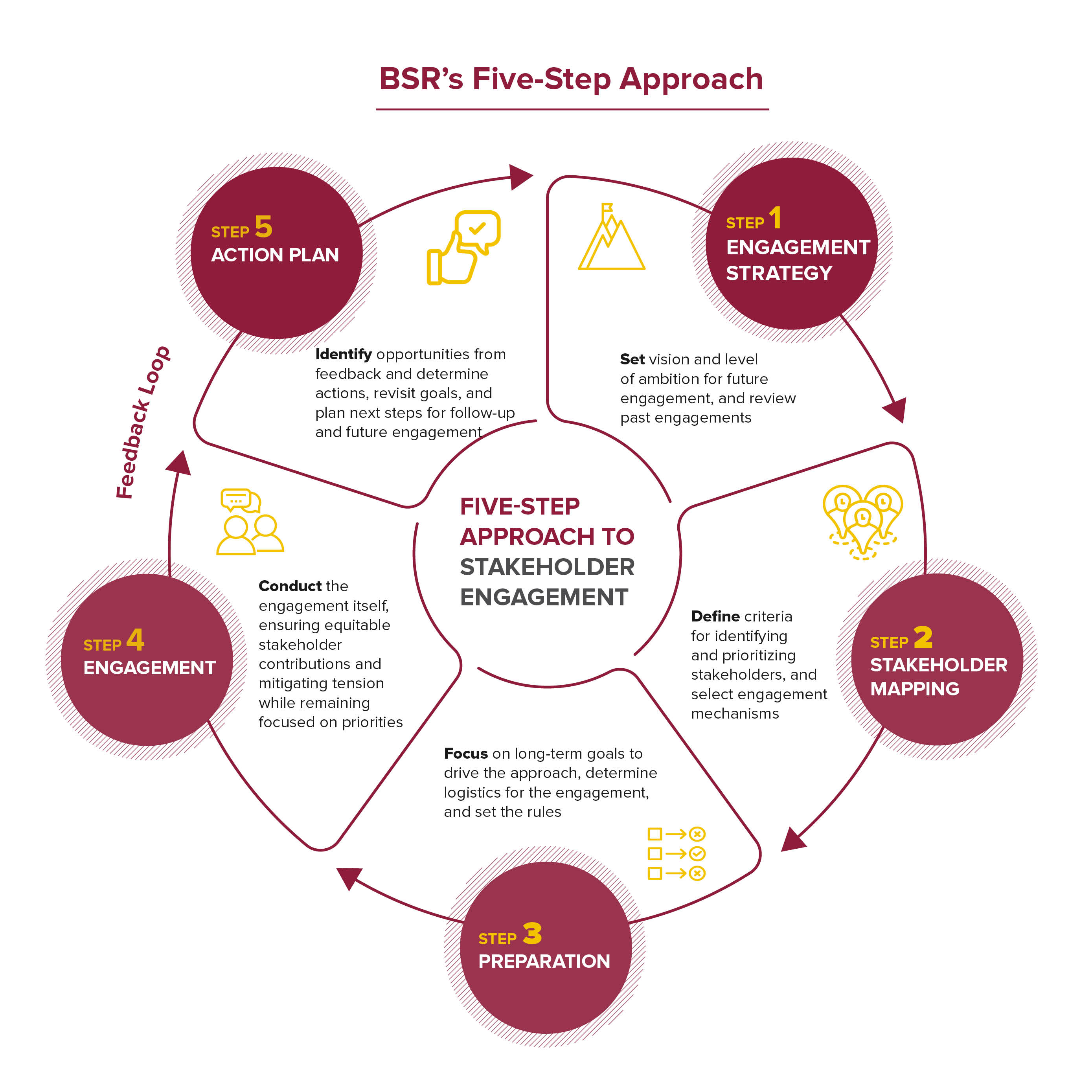
Why is stakeholder trust so important today?
First, an exponential increase in transparency means that companies must behave as if everything they say or do might become public.
Information becomes available at an ever-accelerating pace. While it is still disseminated primarily on dominant technology platforms, our understanding of facts and truth is far more contested and diffuse. Public concern over social and environmental issues can escalate rapidly on social media (ocean plastics are a recent example) and hyper-local conflicts between business and communities can generate global reputational crises.
Employees are also emerging as one of a company’s most vocal, empowered stakeholder groups; they increasingly invite wider, deeper scrutiny of their employers via media interviews, data leaks, petitions, and even walkouts.
Contractual confidentiality clauses are no longer an effective way to manage this new dynamic: The boundary between the corporation and society has grown permeable. Companies need to embrace strategies that make transparency, timeliness, and accountability core operating principles while bearing in mind that workers may view their social responsibilities as more urgent and compelling than their employers’ short-term profit targets.
Second, even big investors are declaring that an exclusive focus on company interests has become counter-productive.
BlackRock CEO Larry Fink made a pressing case for strategic stakeholder engagement in his 2019 annual letter, noting: “Companies that fulfill their purpose and responsibilities to stakeholders reap rewards over the long-term. Companies that ignore them stumble and fail. This dynamic is becoming increasingly apparent as the public holds companies to more exacting standards. And it will continue to accelerate as millennials—who today represent 35 percent of the workforce—express new expectations of the companies they work for, buy from, and invest in.”
This quote reflects a broader shift in investor sentiment. Evidence signals that consideration of environmental, social, and governance issues is highly correlated with corporate performance over the long term. Companies that rely on one-way, PR-led approaches to manage these issues will not thrive. Fink’s challenge necessitates a robust engagement strategy in which companies determine how to weigh and balance a broadening array of overlapping and conflicting interests in a transparent and defensible way.
Finally, companies in 2011 primarily understood stakeholder engagement as a way to understand and manage reputational risk.
A key question in any mapping exercise was “Can we trust the stakeholder?” Today, it is usually more important to ask: “Can the stakeholder trust us?” The development of international frameworks that shape sustainability efforts, most notably the UN Guiding Principles on Human Rights, has driven a shift in emphasis toward corporate impacts on society and away from self-interested risk considerations.
We have substantively updated our framework to reflect these developments, emphasizing such new stakeholder mapping criteria as vulnerability, developing a new set of core engagement principles, and shifting the focus away from one-way information-gathering and toward building mutual trust and understanding. We have also considered stakeholder engagement in the context of new business models such as digital platforms, wherein companies face billions of stakeholders and can have an unprecedented impact on their lives.
Stakeholder engagement may seem more difficult and overwhelming than ever, but it needn’t be. Our updated report takes full account of how the world has changed while maintaining our original focus on practicality and clarity. BSR’s goal is to help companies build a deeper understanding of the social systems in which they operate—and to help them develop purposeful direction in pursuing their own goal of building sustainable trust.
Originally appeared on BSR and 3BL Media News.
Image credit: Pexels
Big Business Calls for EU Climate Neutral Strategy
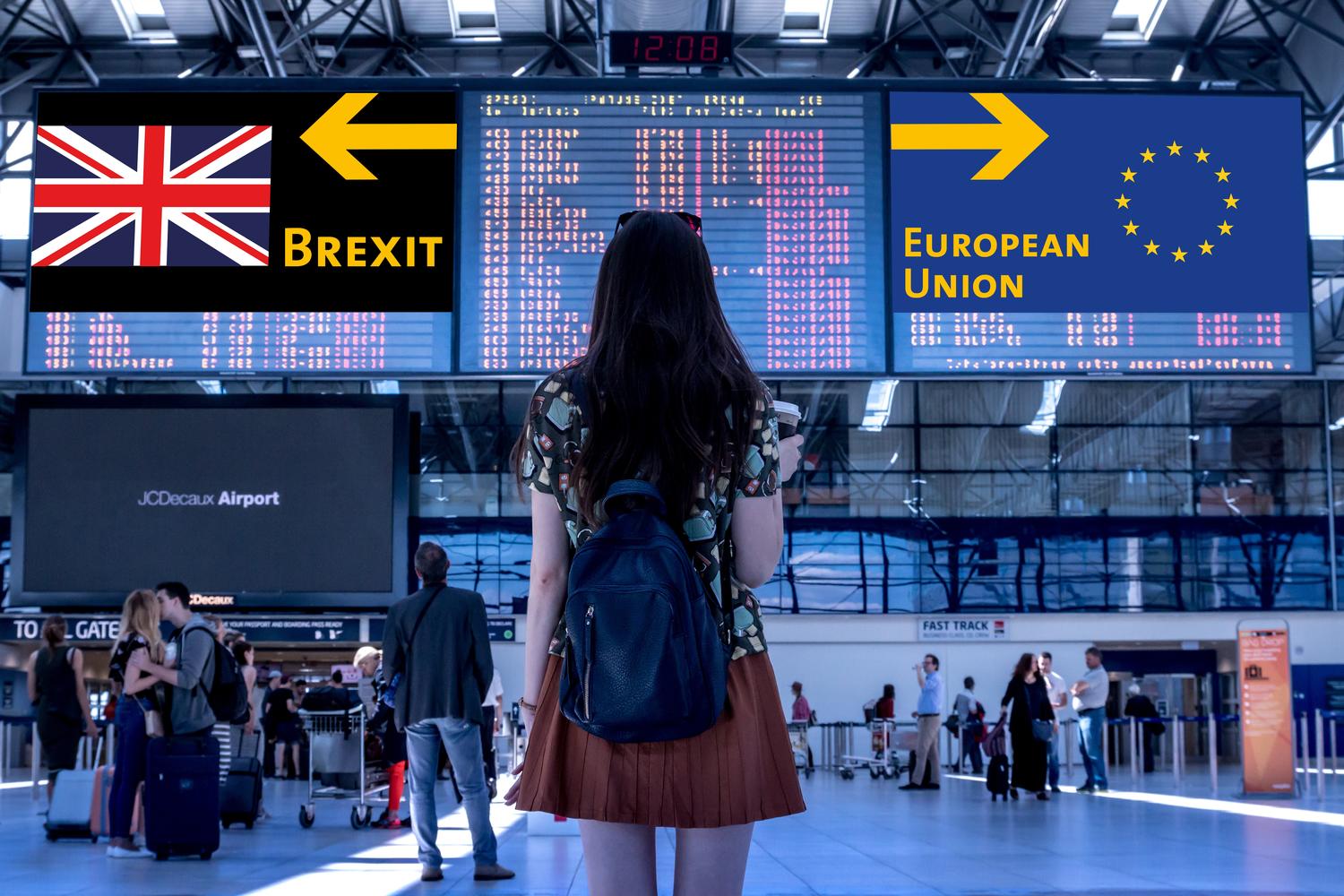

Ahead of Thursday’s summit in Sibiu, Romania, CEOs from 50 leading global and European brands are urging the EU’s heads of government to prioritize a decarbonization strategy.
Europe’s leaders are desperate to move beyond Brexit and focus instead on what’s next for the 28-nation bloc. This week’s Future of Europe Summit is an opportunity to do so, and big business, which has long been voicing its opinion on the United Kingdom leaving the European Union, is looking to put climate action high on the agenda.
Ahead of Thursday’s summit in the Transylvanian city of Sibiu, Romania, CEOs from 50 leading global and European brands, including Diageo, Unilever, IKEA, DSM, Burberry, Phillips and Tetra Pak urged the EU’s heads of government to prioritize a decarbonization strategy. In an open letter, they called for ambitious targets and policies to achieve climate neutrality, protect European competitiveness and ‘set a new economic direction’ for the continent. “A clear, coherent vision from European governments and institutions for climate neutrality by 2050 at the latest will give us the long-term guidance we need to invest,” the CEOs wrote. “To succeed, this strategy will need to go beyond the traditional climate focus, encompassing trade, transport, agriculture, innovation, industrial and infrastructure policies.”
They may be pushing at an open door. Although greater political and defense integration is likely to top the summit’s agenda, leaders will debate a broad agenda for the next five years put forward by Jean-Claude Juncker, the outgoing European Commission president. Among his proposed priorities are stronger efforts to “fight climate change…reverse environmental degradation and transition to a circular economy.” Pressure for climate action has also been coming from Europe’s leading banks. In April, the governors of the Bank of England and Banque de France warned that financial regulators, banks and insurers must act to ensure an orderly transition to a low carbon economy.
The CEO letter calls for faster European progress on low carbon transition, powered by targets to drive private sector innovation and investment in net zero emissions industries. Signatories [PG1] cover the automotive, energy, retail, chemicals, steel, engineering, insurance, farming and food and drink sectors, representing more than 1.5m European employees. Business and investment networks representing 16,000 companies, including The Prince of Wales’s Corporate Leaders Group and We Mean Business network, also signed.
Unilever CEO Alan Jope summed up their case for action: "Businesses have a responsibility to take action that will help address climate change, and many of us are already doing so. But we need to accelerate progress. A European strategy to deliver Net Zero Emissions by 2050 is essential to signal the direction and speed of travel that is necessary to achieve the 1.5 C degree ambition set out in the Paris Agreement."
Companies cite low carbon benefits
To bolster their argument, the CEOs cite the European Commission’s own vision document, “A Clean Planet for All,” which details likely positive impacts of a carbon neutral Europe by 2050. These include a net 2 percent increase in the EU’s GDP, millions of jobs created by new industries and reduced costs linked to fossil fuel imports.
Under the Paris Agreement, the EU’s 28 nations agreed a binding target to cut their collective emissions by at least 40 percent below 1990 levels by 2030. A third of these emission cuts are to come from renewable energy and another third from energy efficiency improvements. In arguing for a 2050 decarbonization commitment, and an economy-wide strategy to reach it, European businesses are seeking to up the ante.
Whether these business leaders succeed or not will soon become clear. Following the informal summit in Sibiu, EU leaders will finalize and adopt a Strategic Agenda for 2019-2024 in June.
Image credit: Stefan Schweihofer/Pixabay
Corporate Renewable Energy Commitments Catalyzing Change


How can we remake the energy landscape in the U.S. to embrace a robust clean energy and decarbonization trajectory within a decade, and do so in the face of significant political headwinds at the federal level?
Last year, the world’s leading climate scientists sent a clear message: we must cut greenhouse gas emissions by 50 percent in 10 years and transition to a carbon free economy by 2050 in order to avoid the most catastrophic impacts of climate change.
One of the most important steps in achieving that goal is accelerating our transition away from fossil fueled power generation and toward renewable and carbon-free sources such as wind and solar.
Despite the urgent need for action, the current U.S. federal administration is committed to pulling us in the wrong direction. President Trump has announced his intention to pull the U.S. out of the Paris Agreement, and is trying to repeal or otherwise weaken critical regulations that keep our air and water clean and position U.S. industries to lead in a low-carbon future. On top of that, the administration is attempting to skew the rules of the game to benefit uneconomic and heavily-polluting industries of the past, such as coal.
These moves make the challenge in front of us much more acute. How can we remake the energy landscape in the United States to embrace a robust clean energy and decarbonization trajectory within a decade, and do so in the face of significant political headwinds at the federal level?
There is no single answer to that question, but it is clear that we will need to further tap bold private sector leadership to scale existing solutions. Companies are the leading consumers of electricity and uniquely situated to take advantage of renewable energy benefits. They’re also the primary drivers of innovation.
When it comes to building a renewable electricity grid, we already have solutions that are technologically feasible and economically beneficial. Renewable energy is already the cheapest energy source in markets around the world, energy storage costs are falling fast, and the energy transition is creating skilled, well-paying jobs in communities across the country.
New leaders in state and local governments, businesses, technology, and many other sectors are rolling up their sleeves and getting to work on clean energy. Here in the U.S., over 3,600 leaders from all 50 states, representing over 150 million people and nearly $9.5 trillion in GDP, have joined together to announce that “We Are Still In” the Paris Climate Agreement and support its goals. Globally, over 160 leading companies have committed to powering their businesses with 100 percent renewable energy, putting some of the smartest minds and best problem solvers in private industry to work finding ways to achieve these ambitious goals. Last year, corporate buyers in the U.S. signed contracts for over 6,500 megawatts of renewable energy, more than doubling previous records.
This progress is encouraging, but it’s just the start. We must push ourselves to go further, asking how we can take the power of the clean energy revolution that has begun inside dozens of leading American companies and use it to bring the promise of cleaner, safer and cheaper power to everyone.
Here are some of the ways companies are increasing the impact of their renewable energy procurement efforts to deliver on that promise:
Aggregation: Leading companies have developed innovative deal structures—such as Virtual Power Purchase Agreements (VPPAs)—that allow them to overcome market barriers and secure access to new, large-scale, renewable energy resources. However, these deals are complex and require a scale, a level of expertise, and a risk tolerance that put them out of reach for many companies.
To overcome these barriers, innovative companies are working together. By aggregating their demands, as well as pooling their expertise and resources, companies can create bigger deals than ever before and make renewable energy available to those smaller companies previously unable to access the market.
For example, last year Etsy (an e-commerce website with relatively modest electricity demand) partnered with Apple (a global leader in renewable energy procurement) and other companies to put together a major deal. This deal allowed Etsy to access renewable energy in a way once considered out of reach for a company of its size. Apple was also able to facilitate a larger deal, and deliver great beneficial impact, than if the company had gone it alone.
Green Tariffs: In traditionally regulated states (as opposed to states that have undertaken utility “de-regulation”), utilities have monopoly control over the supply of electricity. Companies in these areas have leveraged their market power as major utility customers (often by publicly setting renewable energy goals) to get their utility to provide them with access to energy from new renewable sources via a “green tariff”. These green tariff programs not only allow the companies to achieve their goals but, by creating a mechanism for renewable energy procurement where none existed before, also have the potential to open up clean power access to other companies. Target, Walmart, Google, and Johnson & Johnson teamed up with Georgia Power to craft such a deal in April of last year.
New Product Offerings: Innovative energy suppliers are also finding ways to eliminate market barriers. By offering renewable energy deals that better meet the needs of buyers, including simpler contract terms and shorter contract lengths, electricity suppliers such as NRG are making affordable, clean power accessible to more companies.
In other sectors, real estate companies, building managers and owners of co-located server facilities, such as Iron Mountain, are finding that supplying their tenants with renewable energy is a great way to reduce their carbon footprint, increase customer loyalty and get an edge on competitors.
Greening supply chains: As more companies embrace science-based carbon reduction goals, they are focusing on the need to reduce the carbon emissions of both their upstream suppliers and their downstream customers (these are known as “scope 3” emissions). Through direct investment in renewable energy facilities, joining forces on aggregation deals, supplier education efforts, and joining voices to advance supportive policies, the most innovative energy suppliers are not merely going renewable, they’re bringing their whole supply chains with them, as Apple recently set out to do in China.
Sharing success stories: As the economic barriers to renewable energy continue to fall, we also need to tackle a still-persistent awareness gap. Not every company can run an ad in the Super Bowl like Budweiser did earlier this year, but as more companies share their clean energy stories with their employees, customers, partners, and competitors they help build awareness of successes while bringing renewable energy further into the mainstream.
While the current U.S. federal administration is creating many obstacles, companies are developing innovative ways to work around, leap over, or plow right through. As the already-robust business case for renewable energy continues to improve, the urgent need to tackle the climate crisis becomes clearer, and businesses build on one another’s successes, it is clear we have the tools and foundation we need to rise to the challenge.
Previously posted in the Ceres 3BL Media newsroom.
Image credit: Tom Fisk/Pexels
Their Vote and Their Jobs: Millennials’ New Tools for Climate Advocacy
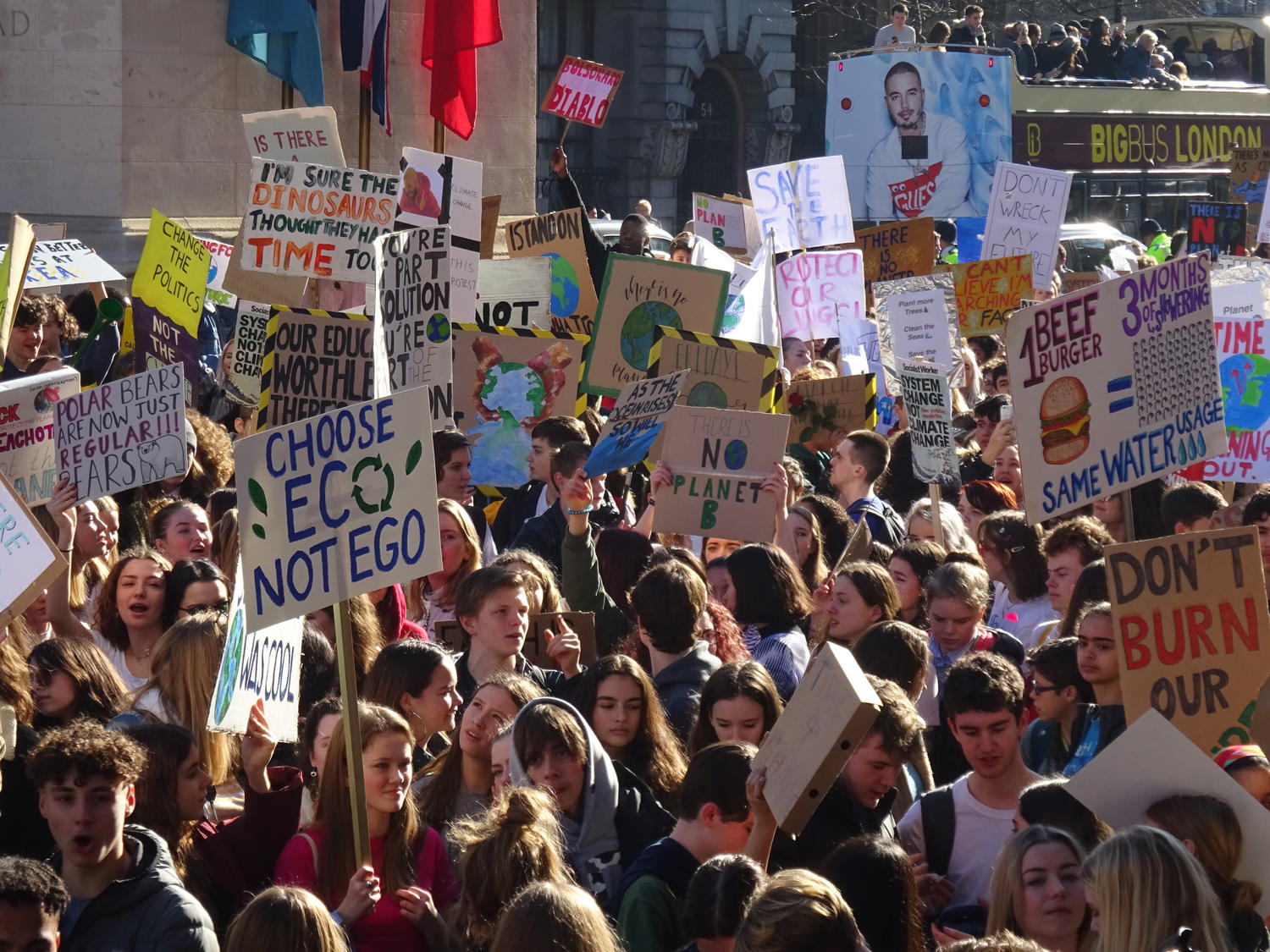
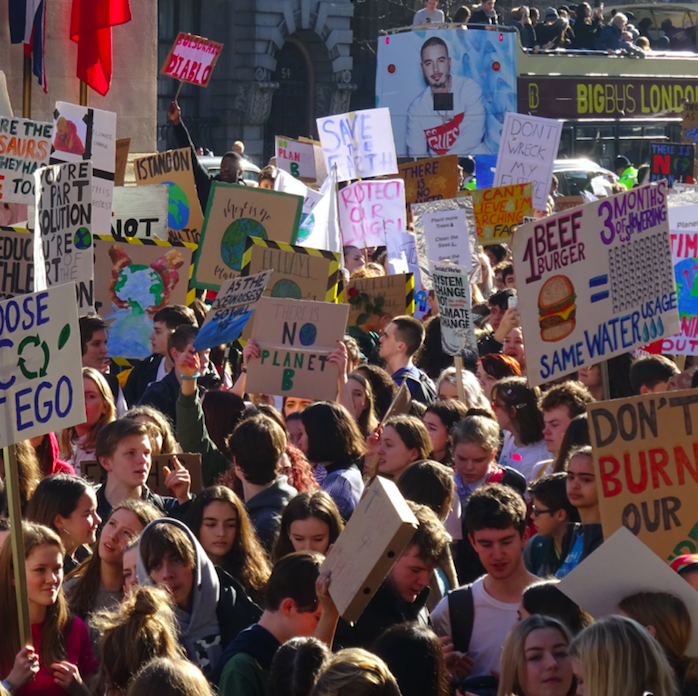
Climate change’s time could be now, and people are seizing the opportunity - like Summer Sandoval, who has a whole new appreciation for the word ‘resiliency’.
A new poll by CNN shows that climate change now ranks as the very top issue among Democratic voters – beating out historically popular issues like healthcare.
Engaging in climate advocacy is growing globally. And what I find to be especially interesting is the innovative approaches that people are taking to make their voices heard.
Climate change’s time could be now, and people are seizing the opportunity. People like Summer Sandoval.
Watching a powerless New York City go dark during Hurricane Sandy gave Summer Sandoval a whole new appreciation for the word ‘resiliency’.
A current graduate student at Pratt Institute, Summer is devoting her time inside and outside the classroom to act on and raise awareness around climate change. Last June, Summer worked with the City of Austin to create a blueprint for converting municipal buildings into storm shelters that are capable of operating off grid during extreme weather events.
A few months later, Summer led a campus Plastic Pledge campaign with LEAP , a student organization at Pratt Institute, as part of the school’s annual Green Week. As an effort to promote environmental awareness, Samuel Pressman (Blue Wave Artist), Isil Akgul, Cristina Pastore, and Summer built an enormous 9-foot tall wave sculpture made out of 10,000 pieces of plastic collected on campus grounds in just a 24 hour period. The sculpture is now on tour to high schools in the New York City area as an educational tool.
Summer cares about the future of our planet. And she’s not alone.
Scott Wood, Director, EDF Climate Corps
Two things that many of us have in common is that we vote and we work. Today, voting and employment are doubling as platforms for individuals to speak out about the issues that they see as important.
Let’s start with voting. The rise in public interest to address climate change has resulted in a spike in the number of presidential candidates that are promising aggressive action on climate change. It’s even made it to the top of some of their agendas, making climate policy an unavoidable issue of focus for the entire field. So now we’re seeing a conversation that was created by people on the ground – like Summer – being echoed right up to the top.
A similar snowball effect is underway within the workplace. Millennials now represent the largest generation in the US workforce. They are also 3 times more likely to work at or apply to a company because of its stance on environmental or social impact. But wanting to work where they can make a difference isn’t always specific to this generation alone. Employees in general are becoming more organized in voicing their beliefs, like we saw in the recent call from Amazon’s employees for more action and leadership on climate change.
This generation is turning their passion for the climate into action. And they’re taking an innovative approach, by using the outlets they have and tapping into the networks they are a part of. And they’re doing it now.
Politicians that exclude climate change as part of their agendas risk losing their vote.
Businesses that turn a blind eye to their activism – employees or not – risk the bottom line.
Summer is part of this growing group of young, passionate activists. They are driving change. And they are our future.
Previously posted on EDF's 3BL Media newsroom.
Image credit: David Holt/Flickr
How Blockchain Could Save California’s Breadbasket … from Sinking


A startup working with IBM believes it could harness blockchain technology in order to save California's breadbasket, the San Joaquin Valley, from sinking.
Blockchain has been touted as the solution for countless business problems. Some ideas we’ve seen here at 3p are valid. Others are, well, borderline bananas. Now one company in particular says its blockchain technology could save California’s breadbasket, the Central Valley, from sinking.
The Central Valley—dismissed by many as hot and dusty and littered with billboards and cheap hotel signs flanking chocking highways—also brims with diversity, offers boundless outdoor opportunities and, if you’re a mid-century architecture fanatic, is home to many a gem. And yes, it does get hot; the wide discrepancy between summer scorching highs and breezy nighttime lows is in part why this fertile bowl between the Sierra Nevada Mountains and the Coastal Ranges grows about a quarter of food in the U.S. And these are high-value, tasty and healthful foods: almonds, pistachios, stone fruit, pomegranates and citrus are among the crops that contribute to an annual $17 billion industry. Cattle, for both beef and dairy, also roam, and reign, in pastureland visible from both Interstate 5 and California Highway 99.
The region, which stretches from Redding in the north to Bakersfield in the south, with rapidly growing cities like Sacramento, Modesto, Fresno and Visalia anchoring the middle of the valley, also has its struggles with air and water quality. And while precipitation in 2017 and this year led to the Golden State finally being declared drought-free, the San Joaquin Valley (the southern half of the Central Valley) in particular will have to cope with several massive water-related problems.
Among them, the San Joaquin Valley is sinking. The state’s over-complicated water allocation system for farmers is part of the problem. But years of drought also pushed farmers to invest in the harvesting of groundwater. If you were smart enough to launch a well-drilling business this century, most likely you’ve done quite well financially. But as a result, the region’s aquifers are becoming depleted, causing many areas to sink a few inches a year. According to a profile in Wired, one corner of farmland has sunk two feet in nine years.
The results include gaping cracks in roads, slumped power lines and damaged canals. Eventually, the area could witness a plunge in real estate values if the amount of water available can’t support agriculture. And if these valuable aquifers can’t be replenished because of them collapsing to a point at which they are no longer able to store groundwater, future droughts could devastate this region environmentally and economically.
What’s the solution? The real pipeline that is needed, one built from the East Coast to West delivering water, isn’t on anyone’s radar at the moment.
Technology, however, could help prevent future chaos.
The World Economic Forum, for example, is touting satellite sensing technology that could measure silt, sand and clay layers, which could help engineers locate potential trouble spots. An improved water allocation system, one that would work akin to a cap-and-trade system for air-polluting industries, is also worth exploring.
Then there is a technological solution. Business journalist Gregory Barber has suggested blockchain technology could help maintain and, eventually, improve the valley’s aquifers. That idea would need some convincing. As with any region, the valley’s farmers and ranchers are notoriously suspicious of government, outsiders’ interference, technology and, in the case of raisin growers, even of each other.
But California’s water challenge also presents an opening for next-generation technology. In 2014, California passed a law designed to restore the valley’s aquifersathe problem is that implementation is left up to local authorities, which means the chances of this legislation working lie somewhere between probably not . . . to never. Furthermore, how could local water districts and farmers track all these water flows?
To that end, a startup, SweetSense, is working with IBM to harness blockchain technology. As profiled by Barber, the company’s sensors could measure water, track where it flows and then share that data with local stakeholders.
Blockchain solutions often sound fantastic in theory but face a steep climb in practice. But if there is one region where blockchain could thrive, it’s in the San Joaquin Valley. True, the one commodity in short supply in this area is trust. A robust blockchain water monitoring system could replenish that trust—and ensure fair and reliable sources of water as well.
Image credit of almond blossoms in western Fresno County: Leon Kaye
This Amazon-Led Alliance is Out to Revolutionize Healthcare


In January 2018, the world’s richest man entered into an alliance with the CEOs of the world's third-largest public company and the United States’ largest bank.
Their sights were set on healthcare, and remain so.
Amazon’s Jeff Bezos (net worth: $128.1 billion, as of 2018), Berkshire Hathaway’s Warren Buffett and JPMorgan Chase’s Jamie Dimon—the respective parties in question—announced a goal to lower healthcare costs for their U.S.-based employees, some 1.2 million in number.
The alliance, which also declared itself “free from profit-making incentives and constraints,” is expected to present solutions that are technology-centered—no surprise, considering Amazon’s presence in this pact. And in the process, it could very well disrupt the entire industry.
The alliance’s challenge is considerable. Healthcare costs, in Buffett’s words, amount to “a hungry tapeworm on the American economy,” consuming some 18 percent of the GDP. That’s up from 5 percent in 1960, and over the last 30 years, the costs have climbed faster than inflation.
The crunch has been felt most severely since the turn of the century. Insurance premiums increased twice as fast as wages between 2007 and 2012, and they rose 19 percent over the following five years, while wages went up just 12 percent.
And as much as employers and the rank and file are feeling the pinch, so too are healthcare providers, such as the skilled nursing facilities which are part of The Allure Group. Our mission continues to be to provide top-notch care at an affordable price, an increasingly difficult thing to do given the ever-increasing number of seniors, the staffing challenges that result from that and the proliferation of chronic diseases.
Our solution, which is in line with the Amazon-led coalition, is tech. In July 2017, we became the first and only skilled nursing facility in Brooklyn to implement EarlySense, a remote monitoring system that tracks patients’ vital signs and movements. And in the first six months, there was a correlation with the results that had been seen elsewhere: a 45 percent reduction in patient falls, a 60 percent reduction in bedsores and an 80 percent reduction in code-blue events. We also make use of robotics, notably to aid patients in their recovery from heart attacks or strokes, and use electronic medical records.
Which way forward?
It is unclear exactly how the Amazon-led alliance will proceed on the tech front, seeing as its most significant move to date was naming Dr. Atul Gawande, a well renowned surgeon, writer and public health innovator, as its CEO in July 2018.
It has been theorized, however, that any coalition that includes a company like Amazon will follow a business model much like the one Bezos and his team already have in place—one that affords every customer access to each of his or her transactions, makes recommendations based on those transactions, offers transparency about price options, posts reviews from other authors and customers, and goes to great lengths to keep customers happy. (And is successful in doing so, having finished atop the American Customer Satisfaction Index for 16 of 17 years, through 2017.)
This said, we beg to ask: Can the Amazon-led alliance commoditize healthcare services with pricing transparency and equilibrium while standardizing care quality across its network? Can it provide all consumers with the same access to the right care at the right time? Can it deliver continuity of care across the continuum of health services for all consumers personalized to their individual needs? How will it reach the unreachable—consumers who are not on the electronic map?
Will all docs deliver the same quality of care?
Unlike inanimate products which often are produced by suppliers in keeping with standards like ISO, healthcare services are only as good as the doctors and medical facilities that deliver them, meaning variations in care quality and healthcare cost will be aplenty.
To date, the majority of Americans are insured by a commercial or government-sponsored health plan. It is the plans’ responsibility to contract with and credential providers of medicine—verifying, and assessing the qualifications of a practitioner to provide care or services in or for a healthcare organization.
How the alliance approach this requirement will be key to enabling greater access to health services, care cost and care quality for all consumers, as provider changes happen routinely and are often not communicated and updated in a timely manner, impacting consumer’s access to care, quality and cost.
Re-shaping the healthcare behaviors of consumers
Given what the alliance already knows about every American through the reach of their products, it’s not inconceivable to believe that it already knows the diagnoses, conditions and healthcare needs of many Americans.
For this reason, we can expect a major healthcare paradigm shift in the coming years. Amazon alone has already reprogrammed how we buy everything we need or want. Bezos cultivated and waited patiently for Amazon to take root in the fabric of American life—operating at losses for more than 14 years—and it's now the most valuable and profitable company in the world.
It is possible that the alliance has already started the work of silently laying the foundation to reprogram consumer healthcare behavior using technology tools like artificial intelligence and big data. Say, “Alexa, order me an Omron blood pressure monitor.”
Considering the alliance’s size, one may consider ...
Healthcare is a local phenomenon, tailored to a given area. While this alliance brings considerable resources to the table, the only way to enact sweeping change is to do so on a case-by-case basis, one region at a time. There is no one-size-fits-all solution.
At The Allure Group, our facilities operate locally. We have six facilities, each one geared toward its neighborhood and clientele. While each facility offers first-rate amenities, such things as food options and other services vary from place to place.
That, then, is what this new alliance faces—and it is a gargantuan undertaking, as other Fortune 500 companies have learned. In 2016, American Express, IBM, Verizon and Shell joined 16 other companies to form the Health Transformation Alliance, which proved to be of great benefit to those companies and their employees but did not impact healthcare as a whole.
Google and Microsoft have also ventured into that space without making so much as a dent.
There are also those, like Karim Sariahmed of Put People First! PA, who wonder whether deep-pocketed types like Bezos should be involved with an endeavor such as this in the first place. Sariahmed is of the opinion that the Amazon chief, like his compatriots, is only looking out for his own personal bottom line, not seeking to enact widespread change.
It can be said without fear of contradiction, however, that healthcare is in need of an overhaul, and the input of innovative thinkers is clearly much-needed. Bezos and Co. may yet prove to have been in the right place at the right time.
Image credit: Pexels